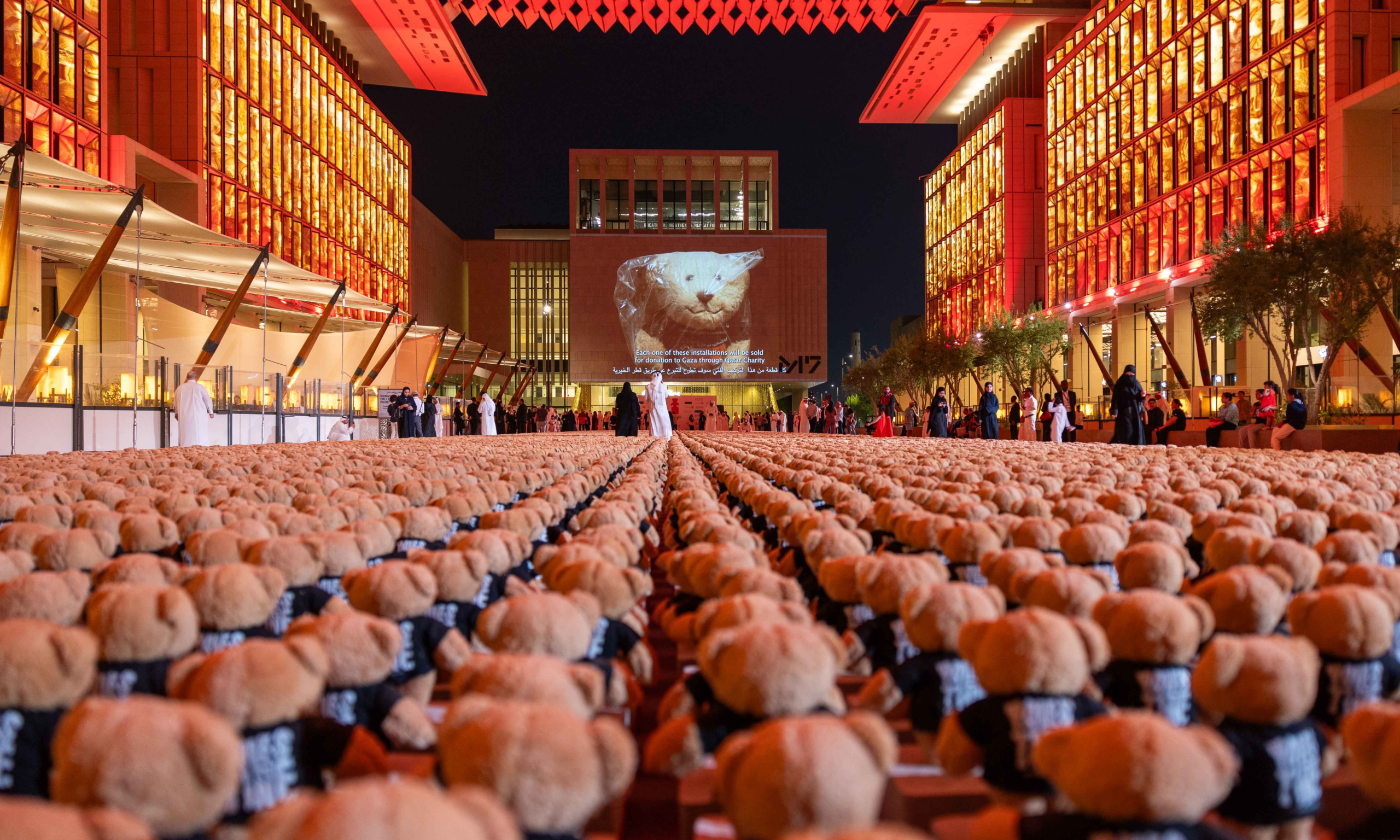Bachir Mohamad says the bears represent “both the fragility and resilience of children”
Photo: Alanood Mohd Aljaber
An art installation consisting of 15,000 teddy bear sculptures, each representing a child killed in Gaza, has been unveiled in the Qatari capital city of Doha.
The work—titled Echo of Lost Innocence and on view in the city’s Msheireb Downtown Doha district—has been produced by the Lebanese artist Bachir Mohamad. He says the humanitarian crisis in Palestine and especially in Gaza has been a cause of profound concern to him for years, and that the idea for the teddy bears came to him in December 2023.
“I was deeply moved by a piece of footage showing a child in Gaza, crying while holding a teddy bear,” he tells The Art Newspaper. “It was a powerful image, this symbol of innocence and comfort clutched in the hands of a child who had experienced such trauma. That visual stayed with me, and it was at that moment I knew that the teddy bear had to be at the heart of my work. The bear represents both the fragility and resilience of children, and I wanted to use that symbol to evoke empathy and reflection in the audience.”
Each of the 15,000 teddy bears is dressed in a black t-shirt emblazoned with the message “I’m not just a number. I’m human. With an identity. With a homeland. I am Palestine. #Free Palestine.” The bears’ feet are rooted in blocks of concrete, representing the rubble in which many of the children have been buried. According to the local health ministry, more than 41,000 Palestinians have been killed by Israeli attacks, most of them women and children, since the conflict began. The Israeli military assault followed Hamas’s 7 October terrorist attacks on Israel, in which 1,200 people were killed and 253 people were taken hostage, according to Israeli tallies.
Each of the 15,000 teddy bears is dressed in a black t-shirt emblazoned with the message “I’m not just a number. I’m human. With an identity. With a homeland. I am Palestine. #Free Palestine”
Photo: Alanood Mohd Aljaber
Bachir was born in Kuwait but he and his family were forced to move to Lebanon during the Gulf War in 1990, where he lived through wars between Israel and Hezbollah in 1996 and 2006. He says: “I want viewers to not only witness the pain but also feel a sense of responsibility to support humanitarian efforts in Gaza. Art has the power to move people in ways that words sometimes cannot, and my hope is that this installation will inspire conversations, actions and contributions toward alleviating the suffering of the children there.”
The installation will be on display until 26 September. Each teddy bear will then be sold, with all proceeds donated to programmes supporting children in Gaza. One woman visiting the site told the news service Al Jazeera: “This pretty much brought tears to me. This is only a teddy bear but you can imagine this is representing the real life of children that live in Gaza. I hope that we can stop this war somehow.”

